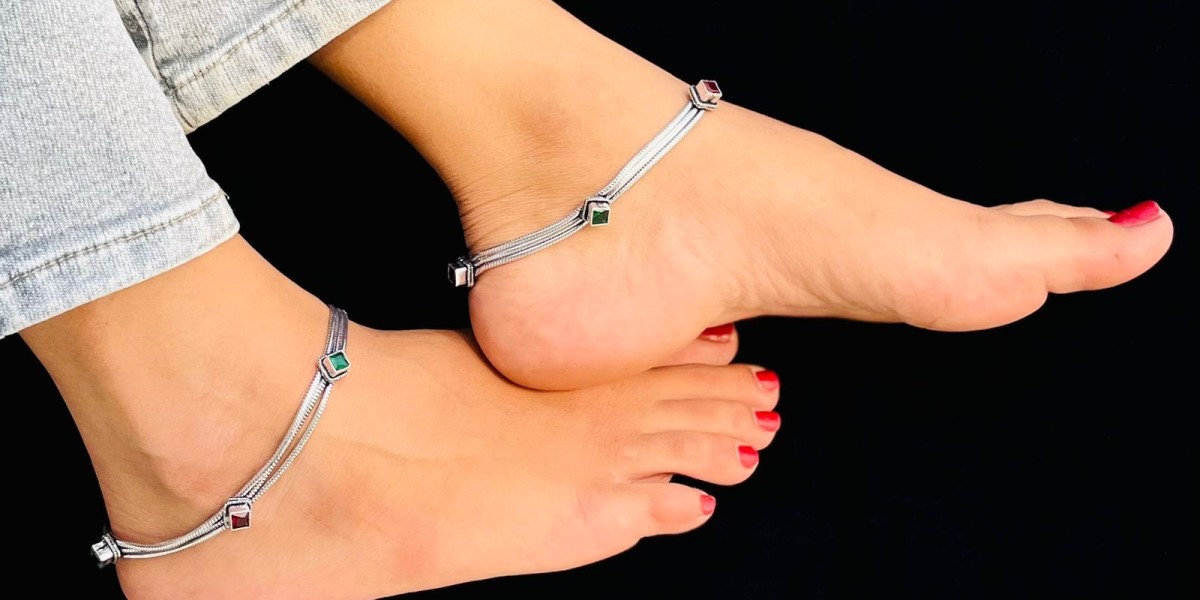Silver payal, also known as silver anklet, holds a deeply rooted place in Indian tradition and feminine ornamentation. More than just a piece of jewelry, it is a symbol of culture, grace, and in many ways, a connection to ancient heritage. Women in India have worn silver payals for centuries not only as a fashion accessory but also as a sign of prosperity, marital status, and spiritual belief. Even today, from rural villages to modern cities, the soft jingling sound of payals marks the presence of tradition in everyday life.
Historically, payals have been mentioned in Indian scriptures, poems, and classical dances. In texts like the Ramayana and the stories of Krishna, payals are described as being adorned by queens and divine women. Traditionally, silver has been preferred over gold for foot ornaments due to cultural beliefs that consider gold sacred and not to be worn below the waist. Silver, on the other hand, is believed to have health benefits and grounding properties making it an ideal choice for anklets.
Designs of silver payals vary across regions and generations. Some are thin and delicate, worn daily for comfort and minimalism, while others are broad, ornate, and heavy, made specifically for festive occasions or bridal use. A common variant includes ghungroo (tiny bells) that produce a gentle rhythmic sound while walking. Modern payals also come with added elements like beads, enamel work (meenakari), charms, or oxidized textures to suit contemporary tastes. From handcrafted filigree to machine-cut patterns, the artistry involved in creating a silver payal reflects rich Indian craftsmanship.
Wearing a silver payal is not only culturally meaningful but also said to have physical benefits. According to Ayurveda, silver has cooling properties that help balance body heat and boost immunity. The slight pressure and vibration from the payal enhance blood circulation in the feet and can also provide relief from joint pain. Many believe that wearing payals with ghungroos can strengthen ankle muscles and improve posture over time.
In modern fashion, silver payals have found new life. They are now styled not only with sarees and lehengas but also with fusion outfits, skirts, and even casual Indo-western attire. Brides still opt for heavy traditional payals during weddings, while college students or working women may prefer lighter, minimalistic designs. Their versatility makes them a timeless accessory equally relevant in rural customs and urban fashion.
To maintain silver payals, regular care is necessary. They should be cleaned with mild solutions like baking soda and lemon or a silver polishing cloth. Storing them in anti-tarnish bags helps preserve their shine and prevent oxidation. Its also advisable to keep them away from moisture, perfumes, and cosmetics to avoid discoloration.
When buying silver payals, one should check for purity, preferably marked as 92.5 sterling silver. Weight, design, and fitting are also important, especially if theyre intended for daily use. Today, many reputed local jewellers and online stores offer a wide variety of silver payals from traditional handcrafted ones to sleek, modern designs.
In conclusion, silver payals are more than just ornamental foot jewelry. They are a beautiful reflection of Indian heritage, spiritual belief, and artistic expression. Whether worn for tradition, health, or style, silver payals remain one of the most cherished forms of jewelry carrying with them stories, sound, and souls.







